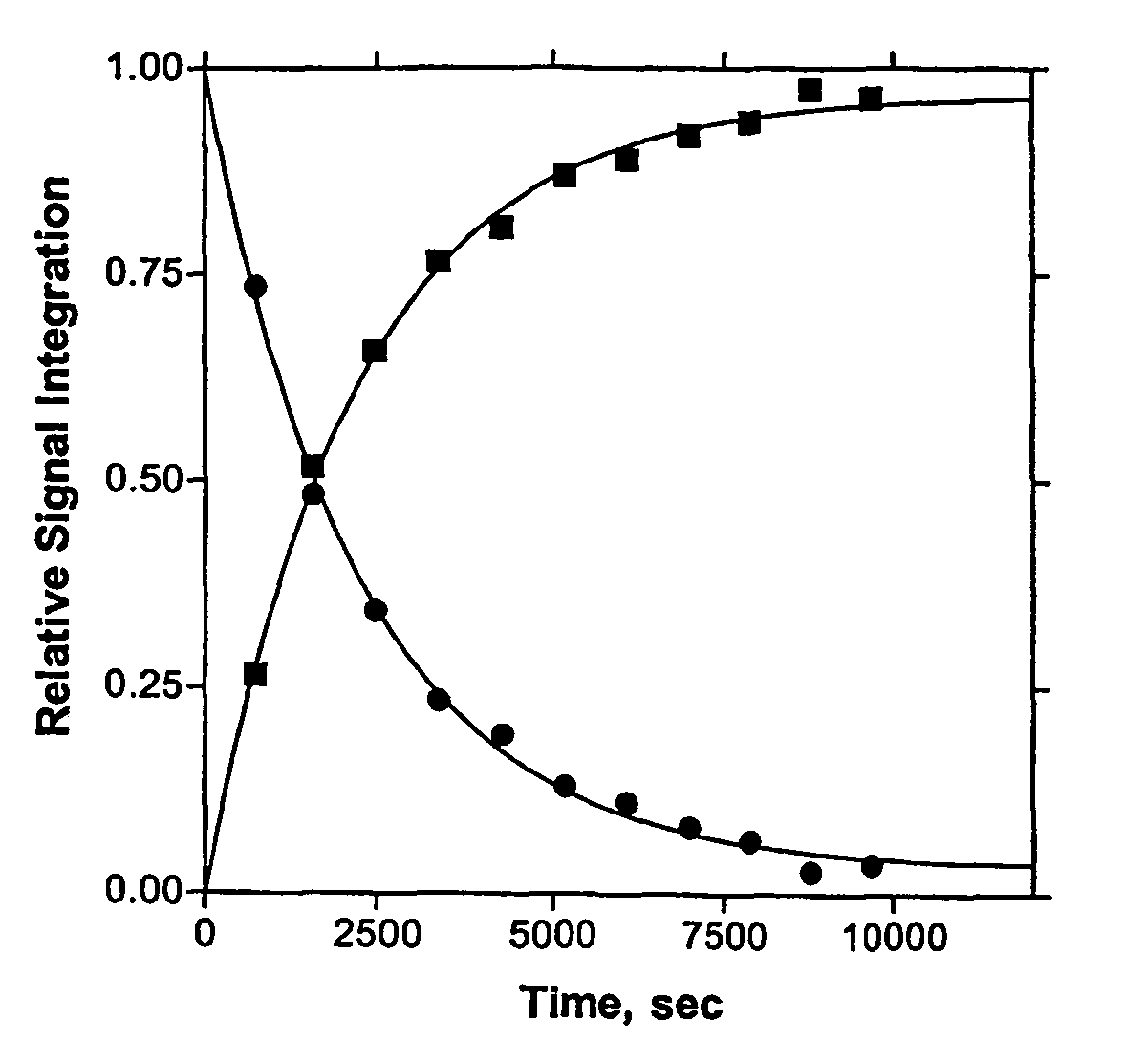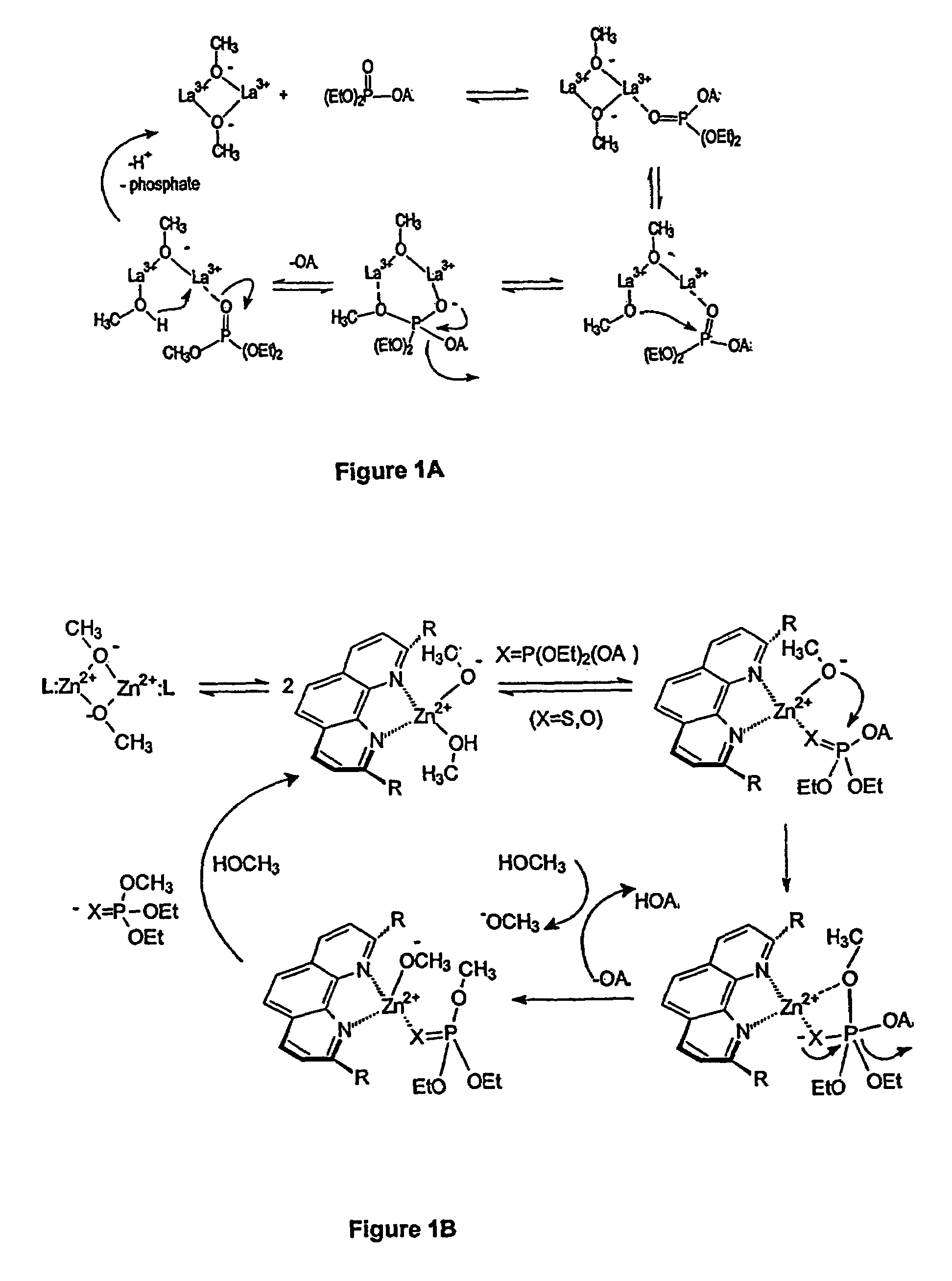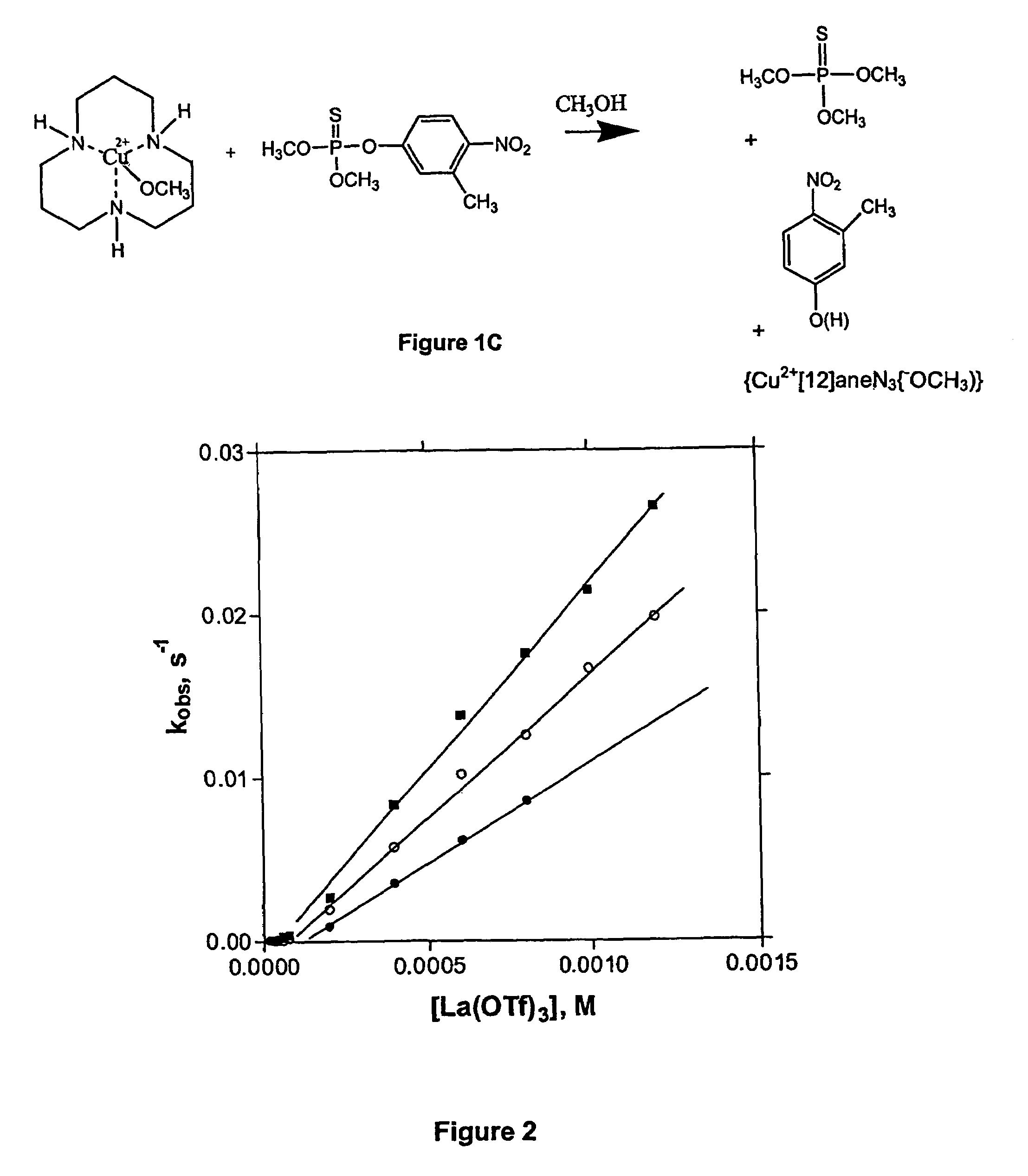Method of decomposing organophosphorus compounds
a technology of organophosphorus and compound, which is applied in the field of methods of decomposing organophosphorus compounds, can solve the problems of difficult decontamination, limited application of chemical warfare nerve to hydrolysis reactions, and limited water soluble “thickening” agents, etc., and achieves the effects of wide applicability, easy and safe disposal of incineration, and rapid ra
- Summary
- Abstract
- Description
- Claims
- Application Information
AI Technical Summary
Benefits of technology
Problems solved by technology
Method used
Image
Examples
example 1
Mn+-Catalyzed Ethanolysis of Paraoxon and Fenitrothion: Reaction Conditions and Rates
[0199]The ethanolysis of fenitrothion and paraoxon was studied in ethanol using various metal ions with varying amounts of added base. These reactions were followed by UV-vis spectroscopy by observing the rate of disappearance of a starting material signal or the rate of appearance of a product signal such as 4-nitrophenol in the case of paraoxon or 3-methyl-4-nitrophenol in the case of fenitrothion. Reaction conditions and the catalyzed reaction's rate constants are summarized in Table 1.
[0200]
TABLE 1Maximum pseudo-first order kinetic rate constants for theethanolysis of fenitrothion and paraoxon catalyzed bymetal ions (0.001 M) in the presence of optimum amountof base (max kobs) and at equimolar amount(kobs 1:1 OCH3 / Mx ratio), T = 25° C.ParaoxonFenitrothionMetalsa104 Max kobs, s−1104 kobs, s−1 b104 kobs, s−1 bLanthanidesLa3+544.15 (1:1)544.15No catalysisPr3+253.24 (1:1)253.24No catalysisNd3+247.5...
example 2
La3+ and Zn2+-Catalyzed Solvolysis of Paraoxon in Propanols: Kinetics and NMR Studies
[0201]The solvolysis of paraoxon was studied in two alcohols that are less polar than methanol, namely 1-propanol and 2-propanol. In the case of 1-propanol, kinetics were monitored by UV-vis spectroscopic techniques following the appearance of the product of the solvolysis, 4-nitrophenol, at λ=335 nanometers. For example, at a concentration of La(OTf)3=0.5 mM=concentration of NaOCH3, in the absence of any ligand, catalyzed solvolysis of paraoxon proceeded with a pseudo-first order rate constant of 2.1×10−4 s−1. At a concentration of Zn(OTf)2=0.5 mM=concentration of NaOCH3, in the presence of equimolar diMephen, the catalyzed solvolysis of paraoxon proceeded with a pseudo-first rate constant of 1.93×10−4 s−1.
[0202]The true catalytic nature of the system was demonstrated in the following Nuclear Magnetic Resonance (NMR) studies. To 2.5 mL of a solution of 1-propanol containing 5% methanol, and 0.5 mM ...
example 3
La3+-Catalyzed Methanolysis of Paraoxon: Experimental Details
[0206]Paraoxon, when placed in an appropriately buffered methanol solution containing La3+ions held in a sspH region between 7 and 11, underwent rapid methanolysis at ambient temperature to produce diethyl methyl phosphate and p-nitrophenol. A detailed reaction scheme is given in Scheme 1.
[0207]
[0208]To two mL of dry methanol at ambient temperature was added N-ethylmorpholine (25.5 μL or 23 mg) half neutralized with 11.4 M HClO4 (8.6 μL) so that the final total buffer concentration was 0.1 M. To this was added 16.0 mg of paraoxon. The 31P NMR spectrum showed a single signal at δ-6.35 ppm. To the resulting mixture was added 12.9 mg of La(O3SCF3)3 and 40 μL of 0.5 M NaOCH3 in methanol solution. At this point the concentration of paraoxon was 0.057 M and that of La(O3SCF3)3 was 0.011 M and the measured sspH of the methanol solution was 8.75, essentially neutrality. This solution was allowed to stand for 10 minutes, after whic...
PUM
 Login to View More
Login to View More Abstract
Description
Claims
Application Information
 Login to View More
Login to View More - R&D
- Intellectual Property
- Life Sciences
- Materials
- Tech Scout
- Unparalleled Data Quality
- Higher Quality Content
- 60% Fewer Hallucinations
Browse by: Latest US Patents, China's latest patents, Technical Efficacy Thesaurus, Application Domain, Technology Topic, Popular Technical Reports.
© 2025 PatSnap. All rights reserved.Legal|Privacy policy|Modern Slavery Act Transparency Statement|Sitemap|About US| Contact US: help@patsnap.com



